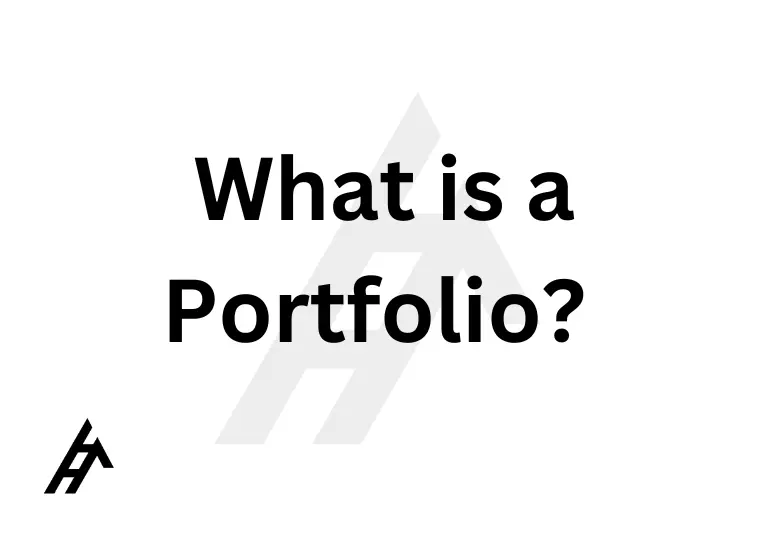Introduction to Portfolios.
Portfolio is used in the today’s world of work so that the talents, skills and other skills of the employees can be presented to prospective employers. But now we are going to ask, what is a portfolio?A portfolio in simply looking at it is a collection of documents and work samples that give a representation of the skills, achievement and activity of an individual. It serves as a form of assurance of one’s capability and past workforce; an indispensable factor in the career status and accomplishment.
Importance of Portfolio in Various Fields.
Portfolio remains crucial in many aspects of life, starting with learning activities, continuing through the artistic processes, and ending with the working practices. They are extremely useful in the creation of a holistic picture of a candidate’s efficiency which will enable the employer or client, or instructor as the case maybe to identify within shortest time whether the person is worthy of the opportunity or the position that he or she is seeking. However, that is not the issue at all because everyone starting from the student and ending up with the artist or, for instance, a handyman, can always use a growing portfolio.
Types of Portfolios.
Professional Portfolios.
Indeed workforce that involve professional portfolios are crafted in a way that is designed to incorporate workforce. Generally, these documents are a resume, a cover letter, work portfolio, Certifications, and references. These portfolios are appropriate for those with positions to filter, any career hunter, freelancer, and any working professional who may require an upgrade or is in search of a new career track.
Academic Portfolios.
Teacher and student portfolios have been noticed and implemented in most institutions and afford people formal experiences and attestation of training. Such portfolios may include assignments, projects, grade records, and essays containing reflectance. They are useful in identifying the changes that a particular student is undergoing both in knowledge as well as growth.
Creative Portfolios.
Creative portfolios are created for artists, designers, writers, and other profiles oriented towards creative job positions. They reveal one’s portfolio including art pieces, paintings, designer works, photographs, writing, and any other creations. Freestyle painting, illustrative work, and graphic design: these portfolios demonstrate artistic competence and creative procedures and are vital for gaining bookings assignments and exhibitions, and commissions.
Components of a Portfolio.
Cover Page.
The cover page is the first page to contain the first glimpse any viewer gets. Your name, contact info, and professional header or tagline, should be part of a professional header. Creating an appealing visible impact on the first page is important as it helps the viewers in setting the appropriate expectation when they go through the portfolio.
Table of Contents.
An effective example of a table of contents is beneficial as it outlines some of the sections in the portfolio thus helping other ports in their navigation. It should then state the major divisions of the document and the page numbers where they start.
Personal Statement.
A statement is a concise summary of an individual’s background, interests, and aspirations, typically submitted to an organization as part of an application form. It provides an opportunity for the candidate to present their background and express their interest in the specific field.
Work Samples.
Portfolio samples are actually the essence of a portfolio since they can range from samples of a piece of work to samples of an individual completed work. Make sure that the references included in your application are the most suitable ones to reflect your abilities and accomplishments. Be sure to provide a brief description of when each sample was published and explain its relevance.
Reflective Commentary.
Reflective commentary offers a deeper understanding of your work and learning process. It involves analyzing your work samples, discussing what you learned, and how you overcame challenges. This section showcases your ability to critically evaluate your work.
Creating a Professional Portfolio.
Purpose and Its Importance: Who is Your Target Market?
In the following steps of structuring your portfolio, one should define its aims and its Intended audience. Are you writing for a job, business or to publicize your products through a fair or booth? It can also be crucial to know who your audience is and what they expect from it to conform to their expectations.
Selecting Appropriate Content.
Select content that is most relevant to your skills and experience since this is the nitty-details area of your resume. Careful choice is always better than great amount of something. Choose your works that will be shown to the audience interest and prove your effectiveness in the field.
Organizing Your Portfolio.
At work, it is always encouraging to organize the portfolio professionally. Take careful noting style to utilize evident headings and subheading together with fitted formatting.It factors that your portfolio should be easily understandable as you are designing it so that the viewers can follow through easily.
Digital vs. Physical Portfolios.
However, each kind of the above mentioned portfolios has its own advantages. Digital portfolios are available and navigable, the portfolio can be published and may contain various media. While electronic portfolios may be convenient, they seem impersonal compared to physical ones that let the viewers get a feel of them. Select the option that will meet your requirements in the easiest manner.
Academic Portfolios.
The aim and relevance in education.
Educational portfolios are important as they make students record and also make a reflection of their progresses. They assist the students and the educators to monitor trends, assess their performance and determine their potential and probable areas of difficulty in future learning.
That are worth including in an academic portfolio.
An academic portfolio can contain assignments done, projects completed, tests taken, and even essay on the experience itself. List items which are evidence of the progress you have made through your learning process and academic achievements.
Guidelines for Students and Teachers.
An individual portfolio should be updated regularly, although it’s advised that the work samples should not be uniform. Guidance should be provided on what aspects to include, as well as other tasks to undertake during the learning process. Students must possess and be responsible for their portfolios since this model encourages the principles of accountability and self-reflection.
Creative Portfolios.
Showcasing Artistic Skills.
A portfolio is the asset of an artist since it represents one’s creativity and first auction piece. Your CV demonstrates you personality, your professional approach to the work and individuality. Whether you are an artist, a graphic designer or a writer having a well-organized view portfolio can be very useful in acquiring new jobs.
Examples of Creative Portfolios.
Contemporary portfolios can be physical and can contain a book or a binder or can be online one and can contain one or many websites or galleries. For instance, a photographer may gather a collection of digital photographs in high definition and present them, or a writer could organize a collection of his/ her samples articles or stories.
How to Make Your Creative Portfolio Stand Out.
This means attaining high quality in the designs and artwork that will be included in the portfolio. Carefully pick the best of your works and polish them before submission; also, give some background information about each of the works. It is important to include different types of writings to present yourself as a diverse writer, but at the same time, all of the work should be like a consistent portfolio.
Maintaining and Updating Your Portfolio.
Regular Review and Update.
You should always examine the portfolio often to be certain that the information and/or strategy contained in it is current. To start with, eliminate any previously completed work that is less impressive or is not up to standard and replace it with better examples. Portfolio management can also show that you are continually developing as the dates proactively updated.
Creating New Work and Experience.
The observation made implies that when coming up with new projects one may consider adding new the moment one acquires more knowledge. Additional fields you introduced into your CV should be briefly described with emphasis on those parts of the gained knowledge being expanded.
Portfolio Development for Different Opportunities.
Portfolios in various posts can be tailored according to the job available for application. In case you are submitting the portfolio as an application for certain job or project, you are better off providing only the samples that are most appropriate to the position in question. This makes the outcome more likely to turn out positive, as it homes in on specific groups of people.
Benefits of Having a Portfolio.
Enhancing Job Applications.
It can therefore help, especially if the customer is targeting a particular organization or an industry. It confirms claims of the abilities of the candidates performing specific tasks therefore setting out a candidate from other competitors. Most employers like to see samples of your work, as this gives them a clear picture of what you will bring in the organization.
Personal and Professional Growth.
Making and possessing a portfolio is beneficial to both the individual who owns a portfolio, and his profession. This makes you to be implicated in the events that happen around you and assists you to establish some goals besides aiding in the expansion of your experience in that certain field.
Building Credibility and Trust.
Portfolio itself should be made and refined in such a way that it will earn confidence from employers, clients or partners. Potential employers would take notice of such probability as it proves your dedication to your discipline and your capacity to produce outstanding work.
Portfolio Presentation Tips.
Effective Design and Layout.
However, there are some guidelines that you have to consider while designing the portfolio design and layout so that the viewers find it interesting and find it easy to go through. Make sure that the colour chosen, the font type identified, and the format adopted as part of the animation process are consistent. This implies that each of the sections should be provided with the appropriate title; there should not be any relationship between any two sections.
Utilizing Technology for Presentation.
Below are some ways that you can increase your portfolio presentation by adopting technology: Some elements added in the digital portfolios are videos and other related application like audio visual clips. Thus, promote your photos through other channels such as websites and online galleries will help attract clientele.
Practicing Your Portfolio Presentation.
For those of you who will be submitting the portfolio in person, learn how to present the information. You should be ready to talk about the samples you included, how you came up with and completed the task assigned to you, as well as responding to the hosts’ questions. Another important aspect of how people behave is confidence and how clearly you can present a particular material.
Common Mistakes to Avoid.
Overloading with Information.
Do not be putting too much data into your portfolio as this will only make things complicated for your reader. The major reason for the above is the fact that the importance should lie in the quality and not on the quantity of training to be provided. Choose the project materials that are the most appropriate and illustrative of your capabilities and successes.
Lack of Organization.
A disorganized portfolio can be challenging to contemporize due to the chance of confusing or averting the focus from a piece of work. It is essential to make sure your portfolio has good headings, subheadings and sections organized them in a logical structure.
Neglecting Updates.
Failure to for a new portfolio is always a disaster since it makes the portfolio to look so irrelevant. Portfolio review and update: It is good practice to go through their portfolio frequently to ensure that they are up-to-date with their dynamics and personal progress.
How Archaeo Agency Can Help.
At Archaeo Agency, we specialize in building high-performance websites designed to attract, engage, and convert. We understand the unique needs of realtors and create custom solutions that not only look stunning but also drive tangible results.
Get Your Professional Website in 24 Hours!
Is your website sending potential clients running? Contact Archaeo Agency today for a free website audit and let’s transform your online presence into a powerful lead generation tool.Ready to give your website the upgrade it deserves? Contact Archaeo Agency today for a free consultation and let’s discuss how we can transform your online presence into a lead-generating powerhouse!
Conclusion.
In conclusion, it is possible to note that the portfolio as a highly effective source can significantly boost up the quality of the professional work as well as personal self- development. It serves as the documentation of a person’s experience and accomplishments, strengthens trust, and paves way to growth and advancement. It may be an awful lot of work to construct and maintain portfolio; nonetheless, it is time and effort worth spending for regardless if one is still in student, in the workforce or in arts. Besides being an opportunity to present yourselves as professionals, it also is an indication of your ongoing efforts and dedication to excellence in your industry.






